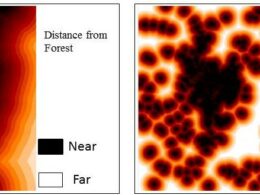Geo-Spatial Technology
Need of Coral Mapping
Mapping and Monitoring Coral Bleaching analysis using Satellite Images
Satellite Image Selection for Coral Reef Mapping
Satellite Image processing for Coral Reef Mapping
- Image was radiometrically calibrated to retrieve at-sensor radiance, then atmospherically corrected
- In addition to its corrections for atmospheric absorption and scattering
- Water column correction was performed using the depth-invariant index to enhance the information on bottom type.
- Images were classified as coral, algae, seagrass, pavement, sand and rubble using a maximum likelihood decision rule after training samples had been selected for each of the benthic cover types.
- Morphological operators combined with visual have been used to improve the visibility and detectability of different benthic features.
- For identification of coral cover, the coral location, color, texture and association were used for better interpretation.
- From this classified output, the coral cover areas were masked out and overlaid over the original image to further reclassify the coral cover visually as live coral, partially bleached coral (a portion bleached, with some live coral tissue), fully bleached coral (100 % bleached with no algal colonization) and dead coral (coral tissue areas partially overgrown by an algal turf layer).
- The image interpretation analysis indicates that 61.79 % of corals were partially bleached, 11.86 % fully bleached and 4.2 % dead. Therefore, changes in the distribution of coral cover could be tracked across the inner reef area by analyzing high resolution satellite data like Quickbird imagery.
